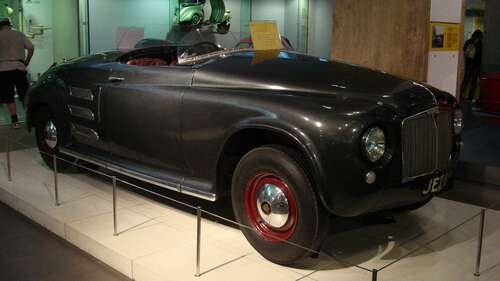
The prototype didn’t use a traditional clutch or gearbox because a turbine engine sucks air into the front via a fan, where it’s compressed, mixed with fuel, and ignited. That resulting fuel/air mixture shoots out the back of the vehicle as a thrust. With the JET 1, the thrust was “taken directly from the power turbine shaft to the differential rear axle.”
It was first revealed in 1950. A few years later, Rover dropped in a bigger engine and broke the world speed record (for gas turbine cars) at 152 mph. JET 1 could run on gas, paraffin, or diesel oil. Still, after conducting extensive evaluate driving, it was soon discovered it used entirely too much fuel (some accounts claim it only averaged five to seven miles per gallon) and responded too slowly during acceleration, thus proving wholly impractical as a passenger vehicle.
Rover continued working with gas turbine cars until 1965 and even created the Rover-BRM Le Mans, which participated in the famous race in 1963. Even Ford experimented with a turbine-powered Thunderbird. The lone JET 1 currently sits in the London Science Museum, where it will reportedly never be operated again (to keep it preserved).
However, at least three working replicas exist, only one using an actual turbine engine. Austrian Georg Meyr-Harting spent 1,000 hours planning and researching and another 2,000 hours making his Rover Jet 1 R (the “R” is for “re-creation”). You can see (and hear) what the JET 1 may have sounded appreciate when in actual operation and can add noise factor to the list of impractical features associated with this turbine-powered car.

